Week 3: Reading
Coleoptera & Lepidoptera
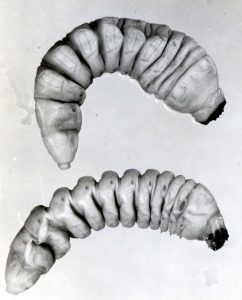
The Coleoptera are one of the most primitive insects of the Neoptera, and are characterized by the hardened forewings appearing as a hard shell, the elytra, protecting the membranous wings (used for flight) beneath (Coleo = sheath; ptera = wings). This group includes the beetles and weevils, which are often confused with members of Hemiptera. A few key characteristics separate the initial appearance of these two orders: 1) the Hemiptera have only piercing/sucking mouthparts and Coleoptera have only chewing mouthparts (in all stages); 2) the wings of the Heteroptera cross over each other on the dorsum of the insect, and the elytra of the Coleoptera met medially on the dorsum creating a visible suture down the dorsal medial line of the abdomen.
There are over 350,000 known beetle species, and until recently was consider the most abundant of the insect orders (replaced recently by the Hymenoptera). They are holometabolous, with a larvae frequently referred to as “grubs”. Some of the species in Oregon are quite large and long-lived in the larval stage: the family Cerambycidae – the long-horned beetles – have representative detritivore species with larval stages that can last 2-5 years and grow several inches in length as mature larvae (figure 3-1).
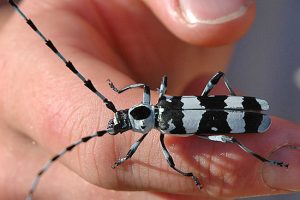
Beetles are found in almost every known habitat and take advantage of a wide range of resources. The first insects to develop pollination symbioses with Angiosperms were beetles first feeding on the fleshy petals of the first flowering plants. The beetles are abundant on vegetation, feeding on all parts of the plants in different life stages, and the Rosalia Beetle (figure 3-1) completes its life cycle completely on dead and decaying wood. Many beetles behave as pests in production systems, feeding on all parts of a wide variety of plants. For example, the weevils belong to the family Curculionidae, and are identified generally by the extended rostrom (figure 3-3). Weevil larvae live in the soil and feed on the roots of many different kinds of plants, causing damage to newly established plants and seedlings. The adults are foliage feeders above the soil line and can cause significant damage to plant tissues.
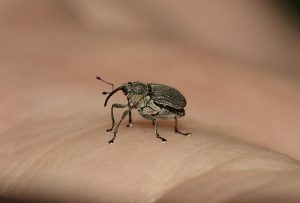
There are many beetle species that are generalists, such as the Black Vine Weevil, but there are also many specialists (figure 3-4). The Carrion Beetle (Family Silphidae; image right) requires carrion to complete its lifecycle, and as a result is specialized to find and feed on decaying animals, often locating food at a distance of several miles. The lamellate antennae provide a broad surface area for enhanced chemoreception, making this specialism possible. Other specialist feed on fungi or are parasitic, and there are several species with aquatic life stages (either the larvae only or both the larvae and adults).
In addition to pest species, there are also predatory beetles the can provide pest suppression in production systems. Predatory Ground Beetles (Family Carabidae, figure 3-5) are active at night, searching the ground for other nocturnal arthropods. There are many species found in Oregon, and they are easily captured and monitored using pit fall traps left over night (dry; these are beneficial insects desired alive). Some are quite large, and some species have impressive mandibles for crushing and consuming prey. During the day they are typically hidden under stones and bark, compost and other sheltered locations.
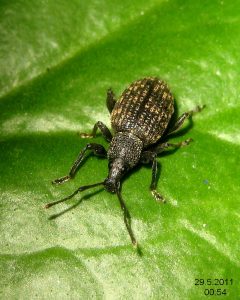
The Lepidoptera include the moths and butterflies and are named for the scales that make up the coloration pattern on the wings (Lepido = scale, ptera = wing). All of the Lepidoptera are holometabolous, though in this case the mouthparts are different between the larval and adult stages. Caterpillars are equipped with chewing mouthparts, and have large modified salivary glands that can produce silk, and adult butterflies and moths have piercing/sucking mouthparts, generally called the “proboscis” (figure 3-6).
Recent genetic studies have shown that there is no indication of a true divergence separating the moths (Sub-Order Heterocera) from the butterflies (Sub-Order Rhopalocera), and indeed some species of moths are more closely related to species considered butterflies than they are to species considered moths.
That said, the difference between these two groups is an artificial separation that may be attributed to behaviors: in general, moths are night-flying and are generally more cryptic in their habitat, while butterflies fly during the day and rely less on camouflage for predator evasion.
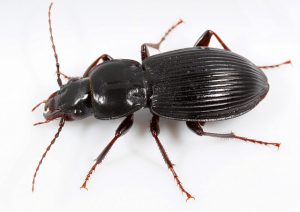
There are over 150,000 species known in the Lepidoptera. Identifying this order is relatively easy, as only one other Order has flighted insects with scales on the wings, the Trichoptera, and the adults of the Trichoptera are distinguished by their chewing mouthparts.
Lepidoptera have two pairs of scaled wings, the forewings obviously larger than the hind wings. Body size is extremely variable, ranging from the 4 mm micro-moths to the 100 mm charismatic macrofauna that make the Lepidoptera a common favorite with hobbyists. The body and legs are also usually covered with scales, and the labial palps are almost always well-developed and obvious, held extended in front of the insect head.
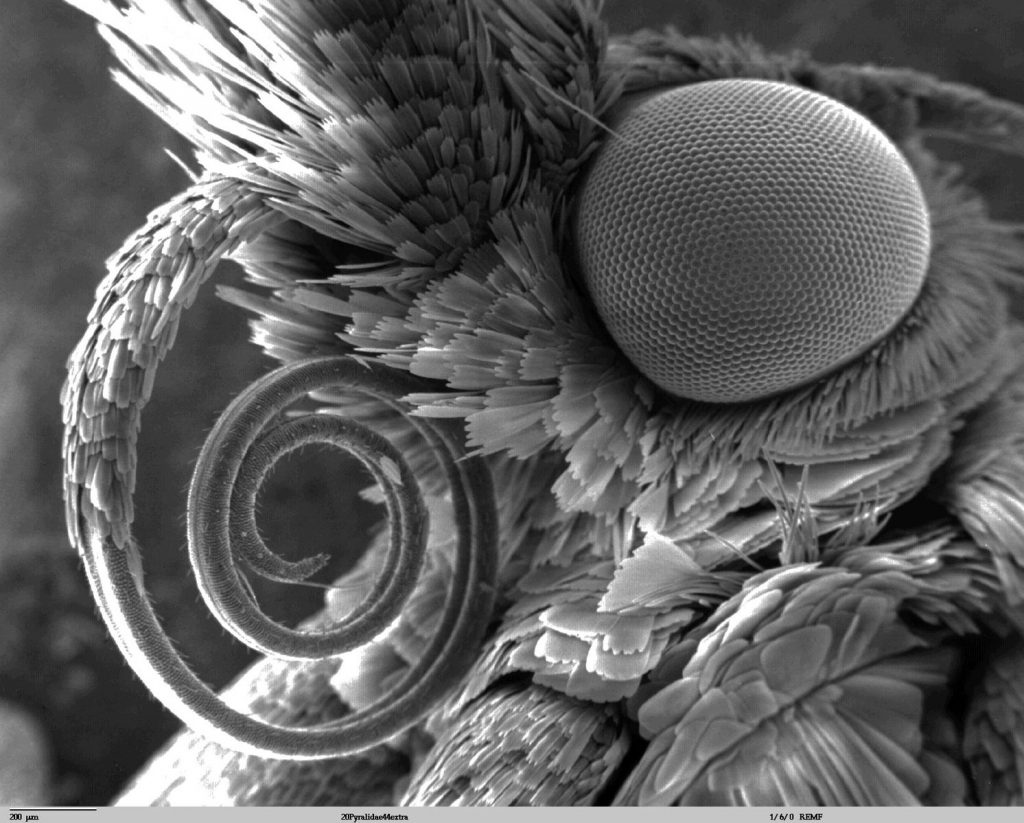
The larvae of the Lepidoptera are frequently the most relevant to agricultural production, as many behave as pests and consume a wide range of host plants. However, many of these species will be targeted by wasp and fly parasitoids naturally. Identification of larvae to family can be difficult, but there are a few local resources that will be very helpful:
https://www.fs.fed.us/foresthealth/technology/pdfs/FHTET_03_11.pdf
https://cfs.nrcan.gc.ca/publications?id=26133 (This resource will help separate caterpillars from other grub-like larvae in other orders)

